

Instruments & Facilities
In September 2006 we installed several new diffractometer systems and reconfigured and upgraded
the previous diffratometers, with the support of the Commonwealth Research Initiative and Oxford Diffraction.
This page lists the instruments and facilities currently available for single-crystal diffraction. Operations and safety manuals can be found here.
This page lists the instruments and facilities currently available for single-crystal diffraction. Operations and safety manuals can be found here.
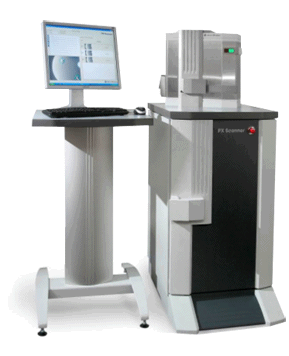 |
Just installed!
The PX-scanner from Oxford Diffraction is up and running. The PX-scanner provides the possibility of checking growing protein crystals in-situ in well-plates, without having to recover and mount the crystals on a conventional diffractometer. You can use it to monitor crystal growth and to select the best crystals for transfer to the diffractometer for full data collection. Contact Nancy Vogelaar for more information, or if you would like to try it out. Image on the left is copyright of Oxford Diffraction. |
 |
The Nova diffractometer system from Oxford Diffraction is specially designed for protein crystallography. It is equipped with a microsource and special optics to produce a very intense Cu X-ray beam, and has an Onyz CCD detector.
It is also equipped with a Cryojet system for routine data collections at 100K, and 10K is possible with the Helijet cooling system.
We use the data to determine the crystal structures of proteins and macromolcules. |
 |
This is the Gemini diffractometer system from Oxford Diffraction. We use it for the collection of precise X-ray intensity data from single crystals, especially at low temperatures: 100K
is routine with a Cryojet system, and 10K is possible with a Helijet cooling system. It is unique in that it is
equipped with two Xray sources, Mo and Cu, so that both can be used to obtain precise structures especially of
weakly-scattering chiral compounds.
We use the data to determine crystal structures, especially of molecular crystals, for which we can determine the molecular geometry (bond lengths and angles) as well as the packing of the molecules in the crystal. |
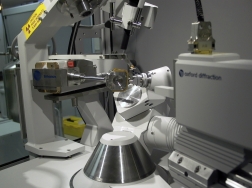 |
The is the Xcalibur-2 diffractometer system from Oxford Diffraction, equipped with a point detector. We use it mostly for the collection of precise X-ray intensity data from single crystals held at high-pressures in diamond-anvil pressure cells. It can also accommodate the Sapphire-3 CCD detector.
There are also pictures from the original installation in 2002. |
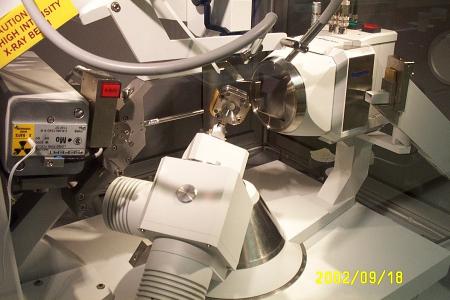 |
This is the Xcalibur-1 diffractometer system from Oxford Diffraction. Its small physical size and kappa geometry make it ideal for the collection of precise X-ray intensity data from single crystals held at high pressures in diamond-anvil cells.
These data enable us to study the evolution of a crystal structure (i.e. the changes in the bond lengths and angles between the atoms) as we apply pressure to the material. There are also pictures from the installation. |
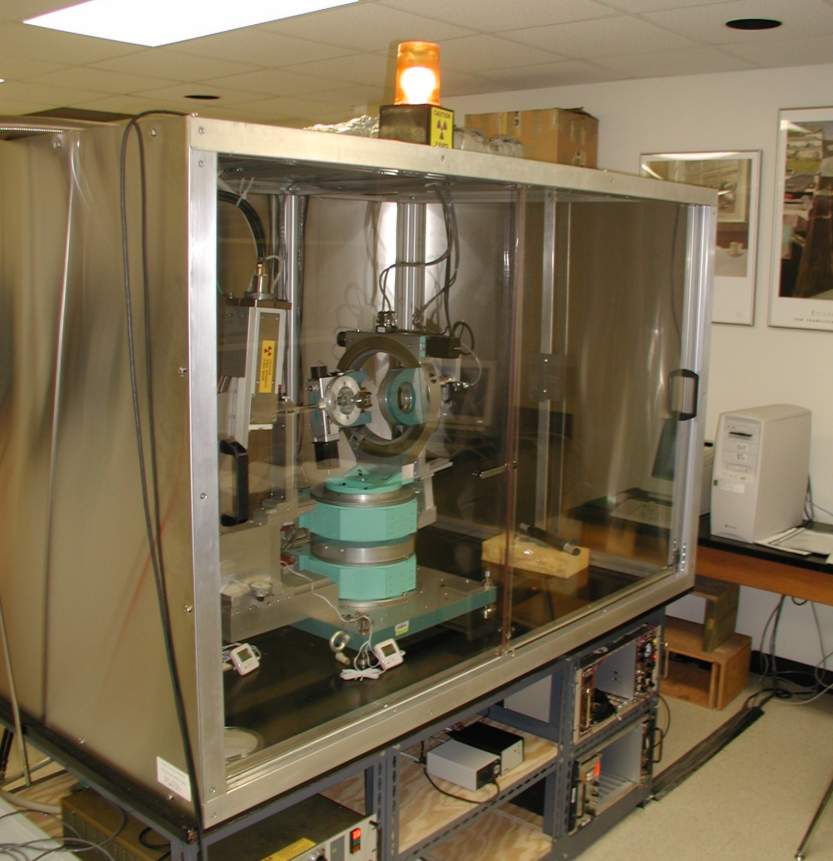 |
This single-crystal diffractometer is a customised Eulerian-cradle design from Huber Diffraktionstechnik GmbH, optimised for extremely precise measurements of lattice parameters of crystals held at high-pressures in diamond-anvil cells.
|
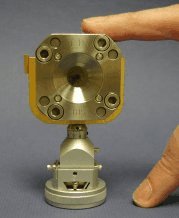 |
A selection of diamond-anvil cells suitable for single-crystal and powder X-ray diffraction, and capable of generating pressures in excess of 10 GPa is available, together with the extensive preparation facilities necessary for their use.
|